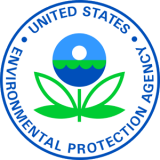Biden-Harris Administration Announces $106.4 Million for Drinking Water Infrastructure Upgrades in Missouri
Made possible by President Biden’s Investing in America agenda, new funding will help ensure that communities have access to clean and safe drinking water

LENEXA, KAN. (APRIL 4, 2023) – Today, the U.S. Environmental Protection Agency (EPA) announced $106.4 million to Missouri for essential drinking water infrastructure upgrades through the Drinking Water State Revolving Fund (DWSRF). Thanks to a $6 billion boost from President Biden’s Bipartisan Infrastructure Law, EPA is increasing the investments available to rebuild the nation’s water infrastructure.
“Every community deserves access to safe, clean drinking water,” said EPA Administrator Michael S. Regan. “Thanks to President Biden’s infrastructure investments, we have an unprecedented opportunity to revitalize America’s drinking water systems, support the Biden-Harris administration’s goal of removing 100% of lead pipes across our country, and protect communities from PFAS pollution.”
“The $106.4 million that Missouri will receive in funding from the Bipartisan Infrastructure Law will be used to ensure that Missourians have access to clean drinking water,” said EPA Region 7 Administrator Meghan A. McCollister. “Missouri’s investments through this fund will aid in securing needed resources to address critical infrastructure needs, threats to drinking water systems such as lead pipes, and emerging contaminants such as PFAS.”
The Biden-Harris administration is committed to strengthening the nation’s water infrastructure, while providing significant resources to address key challenges, including climate change, emerging contaminants like per- and poly-fluoroalkyl substances (PFAS), and cybersecurity.
The DWSRF allotments to states are based on the results of EPA’s 7th Drinking Water Infrastructure Needs Survey and Assessment (DWINSA). The survey, which is required by the 1996 Safe Drinking Water Act, assesses the nation’s public water systems’ infrastructure needs every four years and the findings are used to allocate DWSRF grants to states. The drinking water utilities need $625 billion in infrastructure investments over the next 20 years to ensure the nation’s public health, security, and economic well-being.
At the direction of Congress, EPA’s 7th Drinking Water Assessment for the first time included survey questions focused on lead service lines and is projecting a national total of 9.2 million lead service lines across the country. This best available national- and state-level projections of service line counts will help advance a unique opportunity to employ a separate lead service line allotment formula for the Bipartisan Infrastructure Law DWSRF Lead Service Line Replacement Funding that is based on need. Almost $3 billion of the funding announced today will be provided specifically for lead service line identification and replacement, taking a key step toward the Biden-Harris administration’s goal of achieving 100% lead-free water systems.
President Biden’s Bipartisan Infrastructure Law is investing over $50 billion in water and wastewater infrastructure improvements across the country between FY 2022 and FY 2026. In its second year of implementation, $6 billion of Bipartisan Infrastructure Law funding will be available to states, tribes, and territories through the DWSRF. Of that funding, the Bipartisan Infrastructure Law will invest $3 billion in lead service line identification and improvement; $800 million to address PFAS and other emerging contaminants; and $2.2 billion in other critical drinking water system improvements. Additionally, approximately $500 million will also be available through the DWSRF annual appropriations, established by the Safe Drinking Water Act.
EPA is committed to ensuring every community has access to this historic investment and has centralized increasing investment in disadvantaged communities within its implementation. The implementation of the Bipartisan Infrastructure Law calls for strong collaboration, and EPA continues to work in partnership with states, tribes, and territories to ensure that communities see the full benefits of this investment. In addition, EPA is strengthening its water technical assistance programs to support communities in assessing their water needs and applying for their fair share of this historic investment.
President Biden’s Investing in America agenda is growing the American economy from the bottom up and middle-out – from rebuilding our nation’s infrastructure, to creating a manufacturing and innovation boom powered by good-paying jobs that don’t require a four-year degree, to building a clean-energy economy that will combat climate change and make our communities more resilient.
Background
The 1996 Safe Drinking Water Act (SDWA) Amendments mandated that EPA conduct an assessment of the nation’s public water systems’ infrastructure needs every four years and use the findings to allocate DWSRF capitalization grants to states.
The DWSRFs have been the foundation of water infrastructure investment for over 25 years, providing low-cost financing for local projects across America. Since its inception, states have provided almost $53 billion through DWSRF programs to water systems for approximately 18,000 projects. Each state receives an allocation percentage that is based directly on its proportional share of the total need for all 50 states and Puerto Rico. The percentage made available to any individual state ranges from 1% to almost 11%, with each state guaranteed a minimum of 1% of the total amount available to states. Due to any individual state’s share of the total state need, some states will see increases or decreases in the percentage of funding they receive.
Read more about state-by-state allocation of 2023 funding and information on the Drinking Water Infrastructure Needs Survey and Assessment (DWINSA).
Learn more about the Bipartisan Infrastructure Law.
# # #
Learn more about EPA Region 7
View all Region 7 news releases
Connect with EPA Region 7 on Facebook
Follow us on Twitter: @EPARegion7
